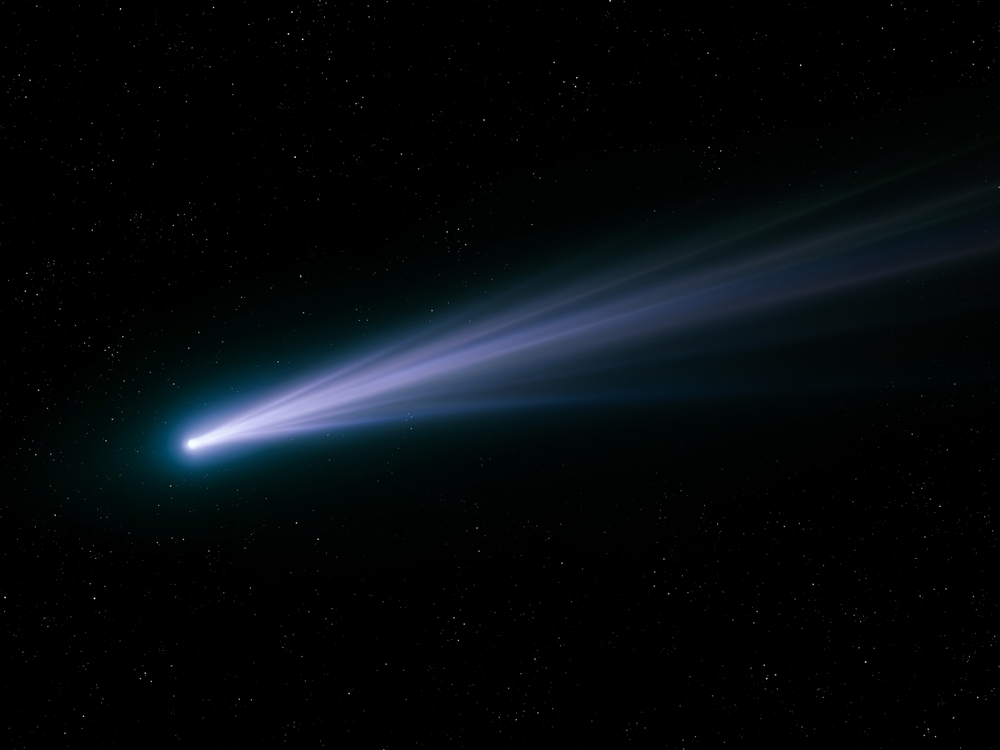The New Year Comet C/2024 G3 May Be 2025s Brightest Heres What to Know
As comets approach the center of the Solar System, they send off trails of gas and dust. (Credit: Nazarii_Neshcherenskyi)NewsletterSign up for our email newsletter for the latest science newsThere arent many comets that are visible to observers without binoculars or telescopes. But one may be coming, and coming soon. Dubbed the "New Years Comet" for its imminent arrival, Comet C/2024 G3 (ATLAS) is currently traveling closer and closer to the center of our Solar System, and is set to come closest on Monday, January 13, 2025. The comet will theoretically be brightest to observers on and around that date, with the best chances of catching it being in the Southern Hemisphere. A Southern SpectacleObserved for the first time in April 2024, the comet will come within its closest proximity to the Sun and Earth on Monday, January 13, 2025, when it will travel within 8.3 million miles of the Sun and 8.7 million miles of Earth. Thats so close that the comet may appear brighter than the stars. In fact, the comets perihelion, or its closest proximity to the Sun in its orbit, is three times closer than Mercurys. At the time of its perihelion, Comet C/2024 G3 may shine about as brightly as Venus, at around negative 4.5 magnitude. But although the comet may be brighter than any other in 2025, it will not be visible to all. Thats because the comet is positioned to be seen better by viewers in the Southern Hemisphere than those in the Northern Hemisphere.Catching the CometAccording to the Planetary Society, the best sightings of the comet are anticipated in the Southern Hemisphere in mid- to late January 2025, when Comet C/2024 G3 will appear in the sky immediately after sunset around the constellation Capricornus.At that time, observers in the Southern Hemisphere may be able to spot the comet above the western horizon, in a similar area of the sky as the setting Sun. In mid-January, the comet will appear closer to the setting Sun but brighter, while in late January, it will appear farther from the setting Sun but dimmer.While Southern-Hemisphere observers may be able to view Comet C/2024 G3 without binoculars or telescopes, observers ability to see the comet will depend on a number of factors, including their vision and location, as well as the weather. The comets appearance in a similar area of the sky as the Sun also adds difficultly for observers, who should take care to avoid staring at the Sun. If you are a Southern-Hemisphere observer hoping to see the comet this January 2025, look for a darker location, far away from cities and other producers of light pollution, where the western horizon will be visible. (Another option is checking out the comet online, through the Solar and Heliospheric Observatory, which may be an altogether better sighting.) Brief But BrightA cosmic clump of frozen dust and ice, Comet C/2024 G3 may be born from the frozen leftovers of the Solar Systems formation. According to the Planetary Society, the comet probably originated in the Oort Cloud, a collection of comets and comet-like objects that surround the Solar System, orbiting the Sun from afar. As comets travel along their orbits and come closer to the Sun, they start to thaw, spewing gas and dust into a shimmering, sunlit trail. These trails, called comet tails, stretch millions of miles across the black backdrop of space, making a stunning sight for observers on Earth, as long as they are bright enough to be spotted. While some comets survive their travels around the Sun, others do not, spouting so much gas and dust that they disintegrate, breaking apart as they approach perihelion. Analysis of Comet C/2024 G3 suggests that its current trip around the Sun isnt its first, improving its chances of survival.If the comet survives, it should shoot around the Sun, then towards the outer Solar System once again, following its approximately 160,000-year orbit. While its trip around the Sun will certainly be brief, it may be bright, too, bringing potentially brilliant views to those who catch them.Article Sources:Our writers at Discovermagazine.com use peer-reviewed studies and high-quality sources for our articles, and our editors review for scientific accuracy and editorial standards. Review the sources used below for this article:The Planetary Society. How to Spot Comet C/2024 G3 (ATLAS)NASA. Comets NASA. Oort CloudSam Walters is a journalist covering archaeology, paleontology, ecology, and evolution for Discover, along with an assortment of other topics. Before joining the Discover team as an assistant editor in 2022, Sam studied journalism at Northwestern University in Evanston, Illinois.


